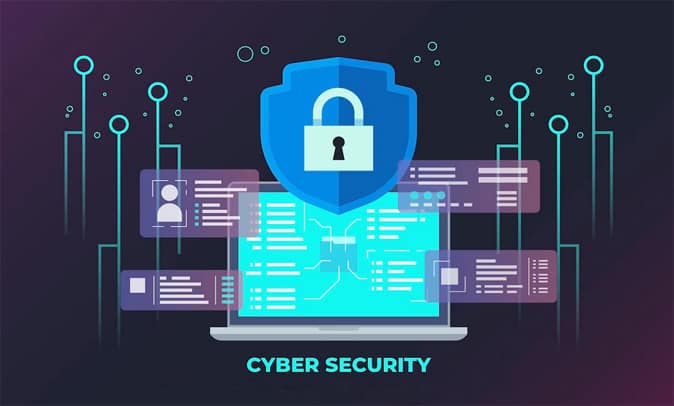VPN Vulnerabilities are Serious Cybersecurity Risk: VPNs (virtual private networks) have become an increasingly important aspect of crucial web infrastructure during the last quarter-century. While personal VPNs for protecting browsing history and offering online anonymity have grown in popularity, commercial or corporate VPNs targeted at the enterprise sector, have also evolved.
These later VPNs are private network services primarily used by corporate clients to access files or systems on office networks from faraway locations. Predictably, these remote access VPN solutions have grown in popularity over the last 18 months as the coronavirus pandemic has swept the globe. But, although they have been a game changer for organizations, they have also opened the door to new types of potential disruption. And not the type of “positive” disruption that tech professionals get excited about.
Targeting VPN vulnerabilities
Sadly, as with any technology that unexpectedly establishes its worth to genuine users, bad actors are eager to use VPNs in ways that might harm them. It includes exploiting VPN flaws to create backdoors, trojans, and web shells that may be used to gain remote control and access to a web server to execute arbitrary instructions.
For example, at least two major hacker organizations have launched malware designed to attack vulnerabilities discovered in the virtual private network solutions of troubled VPN provider Pulse Connect Secure. They have attempted to penetrate US military businesses by exploiting vulnerabilities such as the remote code execution issue CVE-2021-22893, which has been evaluated as a 10/10 in terms of threat severity. The attacks have been connected to organizations sponsored by China.
The patching problem
Over-the-air upgrades have made it easier to resolve software security issues. When a vulnerability is identified, it may be “patched” with an update that plugs that specific weakness and makes it no longer exploitable. Nevertheless, this depends on the appropriate party providing a patch on time. Zero-day vulnerabilities, flaws exploited without the developer’s knowledge, might leave them scurrying to remedy the problem. There will then be a delay while they create a fix or release a workaround to address the issue.
Even if this is accomplished, it is not the end of the narrative. Bad actors have been attempting to exploit vulnerabilities that have been publicized and patched for more than a year. For example, three Pulse Connect vulnerabilities presently being exploited have been known for some time and have publicly available fixes.
The problem is that even once a vulnerability has been patched, it still depends on end-user attention to install the appropriate fixes. It is best to practice keeping track of the number of security patches released; however, this is only sometimes practical. In addition, patching may be challenging due to the many patches available and, in certain situations, the difficulty of applying them. In a nutshell, patch-based vulnerability management is ineffective.
Consider SASE
Throughout the epidemic, VPNs have become increasingly important. Yet, this has also revealed some of their flaws. The rising number of CVEs (Common Vulnerabilities and Exposures) identified each year for VPNs, and the amount of stolen VPN credentials implicated in large-scale data breaches demonstrate how this technology is not always an appropriate option. As does the possibility of malware assaults employing VPNs. While the VPN tunnel (the method VPNs transport information over a specific path) is encrypted, traffic traveling through such tunnels is not examined for risks such as malware. As a result, it has the possibility to be exceedingly hazardous.
These are just some of the issues that businesses confront while using VPNs. For example, during the pandemic, scaling VPN capacity to handle significantly bigger fractions of their staff working remotely was a major issue. With the enormous rise of remote locations that must be served, offering the necessary VPN lines to allow for continuous communication has become difficult. So, what you do when you want the benefits of a VPN but not the drawbacks? When it comes to simplifying security management, SASE may be the best solution. Gartner unveiled SASE, short for Secure Access Service Edge and pronounced “sassy,” in mid-2019 as a new, cloud-native architectural framework meant to provide safe worldwide connection to all users in all places.
A great alternative to VPN
SASE is an excellent substitute for VPN. SASE provides optimized connectivity, scalable access, and in-built threat protection by combining VPN, firewall-as-a-service, data loss protection, antivirus, malware inspection, Secure Web Gateways, Cloud Access Security Brokers, and SW-WAN, all delivered via a single cloud service at the network edge. Moreover, it can supply various decentralized security and networking services to any number of remote users without using VPN concentrators or regional hubs since it is built on top of Points of Presence (PoPs) spread worldwide.
These PoPs are linked by a private backbone to provide optimum routing from the edge to the application. Because all network traffic is routed through a comprehensive network security stack, security measures like multi-factor authentication (MFA), complete access control, and other threat protection are included.
Admins have constant visibility and control over all traffic that traverses the Company Network.
SASE, as a managed service, may significantly simplify vulnerability management. It has been a game changer for network security, yet it is just a few years old. The advantages of products like VPNs are obvious to everybody. But, some things could be improved. SASE provides many of the same benefits to the end user but without drawbacks. That’s a win-win situation for everyone.

